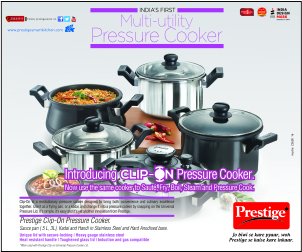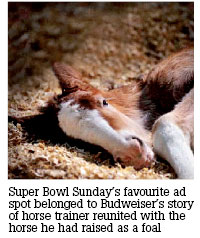 ADS THAT STOOD OUT IN THIS YEAR’S SUPER BOWL
ADS THAT STOOD OUT IN THIS YEAR’S SUPER BOWL
With 30-second spots going for as much as $4 million and more than 111 million viewers tuned in for the Super Bowl Sunday this year, marketers left no stone unturned in an effort to make their ads stand out. As always, there were several winners, plenty of losers and even a few that left many wondering. However, few of the ads broke through with messages that proved both entertaining and smart for business. Among those taking the top spots were commercials for Budweiser, Tide, Taco Bell and Chrysler’s Dodge Ram and Jeep brands. But the clear favourite of the Super Bowl Sunday night on February 3, 2013 was Budweiser’s “Brotherhood” spot, which told the story of a horse trainer reunited with a Clydesdale he had raised as a foal. Budweiser has featured Cyldesdales in its Super Bowl advertising campaigns for years. Many ads flopped. Go Daddy’s “Perfect Date” ad, featuring a model kissing a nerd, and the Wonderful Pistachios ad featuring Psy singing “Gangnam Style” sparked the most negative commentary.
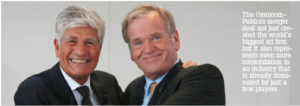 WORLD’S NO.1 AD COMPANY IS ON ITS WAY
WORLD’S NO.1 AD COMPANY IS ON ITS WAY
The merger between Omnicom Group and Publicis Groupe SA shook the advertising world this year. The union between the world’s second- and third-largest ad groups will create the largest advertising firm globally, worth more than $35 billion. If the merger goes through, the combined company would account for nearly 40% of the US ad industry, twice as much as the nearest competitor, WPP. The combination has been approved by the boards of both companies but remains subject to regulatory approval in both the US and Europe, and to a vote by shareholders of both companies. The combined company will be called Publicis Omnicom Group and be jointly led by Omnicom CEO John Wren and Publicis CEO Maurice Levy as co-chief executives. The new powerhouse will have annual sales of around $23 billion and will bring together Publicis brands such as Saatchi & Saatchi and Leo Burnett with Omnicom’s BBDO Worldwide and DDB Worldwide. Collectively, the conglomerates represent some of the world’s largest brands, including AT&T, Visa and Pepsi at Omnicom and McDonald’s, Coca-Cola and Walmart at Publicis.
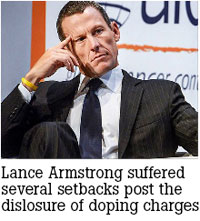 NIKE CUTS TIES TO ARMSTRONG’S FOUNDATION
NIKE CUTS TIES TO ARMSTRONG’S FOUNDATION
Footwear giant Nike pulled the plug on its ties with former cyclist Lance Armstrong’s Livestrong Foundation after a nine-year relationship with the non-profit that helps cancer survivors. The relationship had helped the foundation raise more than $100-million and made the charity’s yellow wristband an international symbol for cancer survivors. Nike had already dropped its personal sponsorship of Armstrong in October 2012 after US Anti-Doping Agency exposed the team doping programme and portrayed Armstrong as its ringleader. And after years of denials, Armstrong admitted earlier this year he used performance-enhancing drugs to win the Tour de France seven times. The foundation said changes in its corporate partnerships won’t affect the services it provides to cancer survivors. Livestrong still has some corporate sponsors, and it has started seeking others.
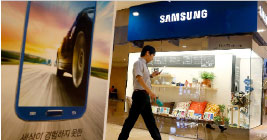 SAMSUNG DETHRONES NOKIA
SAMSUNG DETHRONES NOKIA
South Korean consumer electronics giant Samsung Electronics emerged as the No.1 mobile handset company in India with a 31.5% marketshare in terms of value in the year ended March 31, 2013, dethroning its Finnish rival Nokia (27.2%). Following these two big players were Indian companies Micromax and Karbonn with a market share of 8.7% and 6.4% respectively. This was revealed by the 18th annual survey of Voice & Data. The study covered more than 30 mobile handset companies operating in India across categories such as feature phones, multimedia phones, enterprise phones and smartphones. While Samsung’s value marketshare increased from 25.1% in 2011-12, Nokia’s marketshare (value terms) dipped from 38.06% during the year, according to the survey. Samsung’s overall marketshare was 32.5% in terms of volume, and 45.4% in terms of value at the end of June 2013, the data showed. Samsung’s rise in the Indian market is attributed to its rich product portfolio that was able to cater to customers of all budget categories, noted the report.
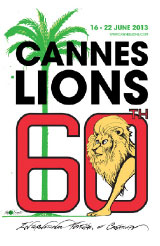 CANNES LIONS 6OTH FESTIVAL
CANNES LIONS 6OTH FESTIVAL
A record 35,765 entries from 92 countries were submitted to the Cannes Lions 60th International Festival of Creativity, the largest and most prestigious global international annual awards for creative advertising and communications. For a fifth year in a row, entries increased with the year 2013 seeing an overall growth of 4% across 16 different awards categories: Branded Content & Entertainment, Creative Effectiveness, Cyber, Design, Direct, Film, Film Craft, Media, Mobile, Outdoor, PR, Press, Promo & Activation, Radio, Titanium & Integrated and the new Innovation Lions categories. “Sixty years ago, 187 films were shipped to Venice to be judged by the first jury and … in 2013 more than 300 jury members will judge nearly 36,000 pieces of work. But one thing has remained the same over the years: the winners will represent the best of the best, and show the way forward for creativity in our industry,” commented Philip Thomas, CEO of Cannes Lions.
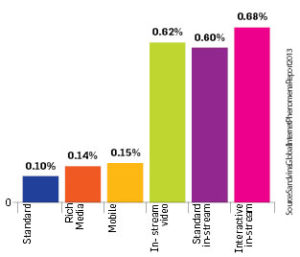 IN-STREAM VIDEO AD BENCHMARKS
IN-STREAM VIDEO AD BENCHMARKS
PointRoll’s latest report reveals that in-stream video ads had a click-through rate of 0.62% last year, outpacing mobile (0.15%), rich media (0.14%) and standard banner (0.1%) ads. In-stream video ads had an interaction rate of 5.68%, ahead of rich media (4.02%) and mobile (0.96%).
NETFLIX + YOU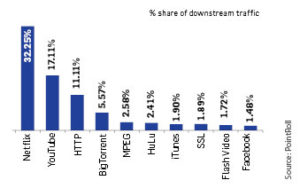 TUBE = HALF OF BANDWIDTH TRAFFIC
TUBE = HALF OF BANDWIDTH TRAFFIC
Sandvine’s “Global Internet Phenomena Report 2013 finds that Netflix accounts for 32.3% share of North American peak downstream fixed access traffic, with YouTube next at 17.1%. When it comes to mobile traffic, YouTube leads with 27.3% share, while Netflix is at 4%.
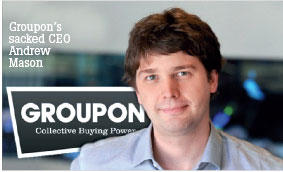 GROUPON FIRED ITS FOUNDER CEO
GROUPON FIRED ITS FOUNDER CEO
Groupon, the group buying website founded four years ago and dubbed the world’s fastest growing company and valued at $13 billion (£10 billion) by 2011, fired its quirky founder and CEO Andrew Mason in 2013 amid worries that people are tiring of the myriad of online restaurant, spa and Botox deals that Groupon built its business on. Groupon Inc. makes money by taking a cut from the online deals it offers on a variety of goods and services. Investors questioned whether that business model is sustainable and leads to growth over the long term and whether the company can not only grow its customer base but make more from each subscriber. The company once hailed as the fastest-growing startup in history rose to prominence in 2010 as the demand for sharply discounted online coupons for everything from neighbourhood car washes to spa treatments peaked. But the loss-making company is now valued at $3 billion and the founder – once heralded as a star on the cover of Forbes magazine but more recently described by analysts as a “goofball” – became a liability.
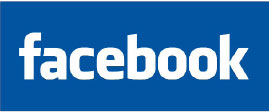 USING FACEBOOK FOR MARKETING
USING FACEBOOK FOR MARKETING
According to Ernst & Young’s new report titled ‘Social Media Marketing – India Trends Study 2013’, Facebook is the favourite playground for social marketers in India, both for everyday conversations and for organising promotions and contests for fans. The findings of the report are based on a survey of 48 social media-savvy organisations in India as well as secondary research. Key questions that the study attempts to answer include what is the business objective for using social media, what are the commonly used strategies and measures, the average social media budget and its future prospects. The marketing teams of some of the organisations that were surveyed include Bharti Airtel, BMW India, Café Coffee Day, Citi India, Cleartrip, Flipkart, Ford India, Honda Cars India, Maruti Suzuki India, Microsoft Corporation India, MTV India, Network18, Pepsi India, P&G India, Rajasthan Royals, Royal Challengers Bangalore, SAP India, Shoppers Stop, Tata Motors and Yatra.com. According to the report, Facebook is the most popular social media platform in India, with more than 62 million users. It is the favourite playground for social media savvy organisations for everyday conversations and engagement through promotions and contests for fans.
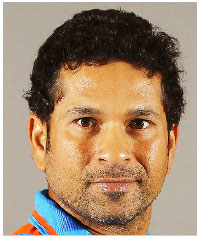 SACHIN’S FAREWELL …IN BIG STYLE!
SACHIN’S FAREWELL …IN BIG STYLE!
Much talk had had happened over Sachin’s retirement from International cricket. Fans, commentators, current players and almost everyone who’s had anything to do with the game of cricket – had discussed the Little Master’s exit from the game. But the day Sachin announced his retirement, hoardings and banners and what not sprang up all over Mumbai with messages that saluted the sportstar and bid him farewell. The brands that Sachin endorsed too weren’t quiet. They did their bit. Sporting goods and apparel brand Adidas launched the ‘SRT Forever’ campaign during the two tests against West Indies to celebrate Sachin’s service to Indian cricket. While Aviva Life Insurance announced the conclusion of its ‘What’s your big plan’ ad-campaign after Tendulkar’s retirement, others like Toshiba and Royal Bank of Scotland conducted short ad-campaigns that ended on November 16, 2013 – the last day Sachin walked on to the cricket field as an official member of India’s playing eleven. Even the title sponsor of Sachin’s last test series, Star India, got into the pay-the-tribute mode by launching a ‘Cheer for Sachin’ campaign. Much alike his career, his last days in cricket were cheered by all. Fare thee well … Little Master. We’ll miss you. So will the brands!
 VIDEO CONTENT FOR ADVERTISERS
VIDEO CONTENT FOR ADVERTISERS
To cash in on the digital medium, which has become an integral part of brand campaigns and activations, GroupM and O4 Digital Media from Optimystix Entertainment, a TV production company, came together to launch MashUp, a digital video-based brand solutions company. Internet video consumption has witnessed a growth, with 80% more video views in 2012 than its previous year. The current market size in India is more than 43 million monthly unique viewers; more than 3.3 billion monthly total video streams; and approximately 19 billion minutes spent watching videos online every month, as per comScore India’s report. MashUp will concentrate on providing ‘video led sustained engagement’ for its clients and will help create engagement strategies on digital and social media through customised and quality content in the form of rich video packages. It will also offer additional services including evaluation of the brand and its competition in social media, social media management and marketing, online media planning and buying and analytics and measurement of brand progress.
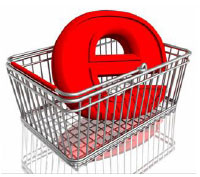 ROBUST GROWTH IN ONLINE AD REVENUE
ROBUST GROWTH IN ONLINE AD REVENUE
The online advertising market in India is projected to reach Rs.2,938 crore by March 2014, according to the findings of Digital Advertising in India report, by the Internet and Mobile Association of India and IMRB International. The online advertising market in India, comprising search, display, mobile, social media, email and video advertising, which was valued at Rs.1,750 crore in March, 2012 has grown by 29% over the previous year to reach Rs.2,260 crore by March, 2013. Even though traditional media like television and newspapers still remain the preferred media for seeking information and entertainment and hog more than 80% of the advertising market in India, the Internet has been steadily increasing its share of the advertising pie. Spends on digital media have steadily increased from just over 1% of total Indian advertising spend in the year 2005 to nearly 7% in 2012. The report finds that by March 2013, search advertising constituted about 38% of the total online advertising spend, translating to about Rs.850 crore while display advertising form a sizeable 29% at Rs.662 crore. Advertisements on mobile phones and tablets have grown from a 7% share in FY 2011-2012 to 10% of the Indian online ad market in FY 2012-2013, totaling to spends of around Rs.230 crore.
 FORBES UP FOR SALE
FORBES UP FOR SALE
Forbes Media LLC, the family owned publishing group run by Steve Forbes, started contemplating a sale in 2013. The New York-based publisher of Forbes magazine, which is best known for its annual billionaire and power lists, announced the hiring of Deutsche Bank to examine a sale after receiving interest from potential buyers. This announcement from the 96-year-old brand followed years of dwindling profits as the founding Forbes family tried to stabilise its fortune by selling a stake in 2006, raising money through asset sales, and moving aggressively into digital publishing. In the US, while Forbes’s print advertising pages fell 34% from 2008 to 1,834 last year, advertising revenues were down 19% y-o-y to $275 million last year. In fact, it’s not just Forbes, the past few years have been quite rough for print media around the world. While Washington Post was acquired by Amazon.com Inc. Founder Jeff Bezos $250 million, Boston Red Sox owner John Henry paid $70 million for the Boston Globe. Interestingly, the Forbes family got a $400 million buyout offer from fashion publisher Conde Nast Inc. in 2004, which it turned down because it wasn’t high enough.
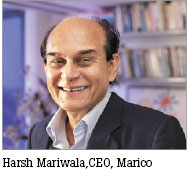 MARICO HIVES OFF SKIN CARE BIZ
MARICO HIVES OFF SKIN CARE BIZ
Marico, the maker of Saffola oil and Parachute oil, spinned off its skin clinic business Kaya into a separate listed company. The restructuring, effective from April 1, 2013, involved demerger of the skin care business under the Kaya Clinic brand as a separate entity from Marico’s consumer products business. Marico, which is present in more than 25 countries across Asia and the African continent, had reported turnover of Rs.4,000 crore in FY 2011-12. Marico Kaya will be listed separately on the Bombay Stock Exchange and the National Stock Exchange and will have its own board of directors distinct from Marico’s board. Marico also combined its consumer products business and international business group for operational cost benefits. Analysts considered it a positive move for investors who were raising concerns about Kaya’s business model. Kaya, which offers skincare solutions through 106 clinics, contributed around 7% to Marico’s consolidated revenue of Rs.4,000 crore in 2011-12, but had a loss of Rs .9.1 crore at the EBIT level. Company officials said there were strong cultural differences between Marico and Kaya that limited the growth prospects for Kaya.
Movements [People + Accounts]
HELIOS MEDIA has promoted Bala Iyengar as COO to handle the increasing scale of operations. At the time of its inception in 2011, Iyengar was roped in as Business Director and led the sales vertical for Helios Media.
ATISHI PRADHAN joins Cheil Worldwide South West Asia as Chief Strategy Officer. Her last stint was with Mogae Media. She will lead the integrated strategy function at Cheil, encompassing traditional, digital, retail and experiential divisions.
SURJIT SINGH joins Raftaar.in as Vice President and Head of Marketing and Business Development. Singh, who will be based in New Delhi, joins the Hindi search portal from Yatra.com, where he was working as head of strategic alliances for over seven years.
PUMA has appointed JWT New York as its global lead creative agency. JWT will assume a leadership position over all of Puma’s global advertising across North America, Europe, Latin America, APAC and West Asia/Africa. While the account will be handled by JWT New York, the agency’s offices across the globe will contribute with relevant regional insights and will work on localising the campaign to better suit the sensibilities of consumers in their respective geographies.
VINOD KAPRI, former Managing Editor of India TV, joins News Express as CEO and Managing Editor. Kapri calls it quits after a stint of six years at India TV. He was reporting in to Rajat Sharma, Editor-in-Chief, India TV.
RAHUL GHOSH, former Group Creative Director at TBWA, has joined Contract Advertising. Ghosh has joined the agency in the role of Vice President and Senior Creative Director. He will lead the creative team in Mumbai and will report to Kapil Mishra, Executive Creative Director, TBWA India.
MAXUS INDIA has won the media duties for edible oils from Ruchi Soya Industries, which includes brands Mahakosh Soyabean oil, Sunrich sunflower oil and Ruchi Gold palmolein. The account will be handled by agency’s Mumbai team headed by Mangesh Korgaonkar.
ASHUTOSH KARKHANIS, former Executive Creative Director and Mumbai Head of Saatchi & Saatchi, has moved to Open Strategy and Design as Partner and Creative Head. He, along with the agency’s Founding Directors Rahul Kaloti and Mangesh Rane, and three other partners, will be part of the firm’s managing board.
DDB MUDRA GROUP has promoted Aditya Kanthy and Amit Kekre as National Strategic Planning Heads. Both were Senior Vice Presidents at the organisation. In their new roles, Kekre and Kanthy will jointly take on the mandate of looking after strategy and planning for all of DDB Mudra offices in the West, North and South as well as Tribal, Rapp and Remedy.
FOX INTERNATIONAL has appointed distribution veteran Rahul Sood to the newly created position of VP – Affiliate Sales and Commercial. His last stint was with NDTV, where he was the head of affiliate sales and network distribution. He quit the company after a stint of 10 years.
KARTIK SHARMA, joins Maxus South Asia as Managing Director. Sharma will take over the reins from current Managing Director Ajit Varghese from January 2014, as Varghese moves into a new regional role as CEO Maxus Asia-Pacific. He will also now be a part of the GroupM South Asia EXCO.










